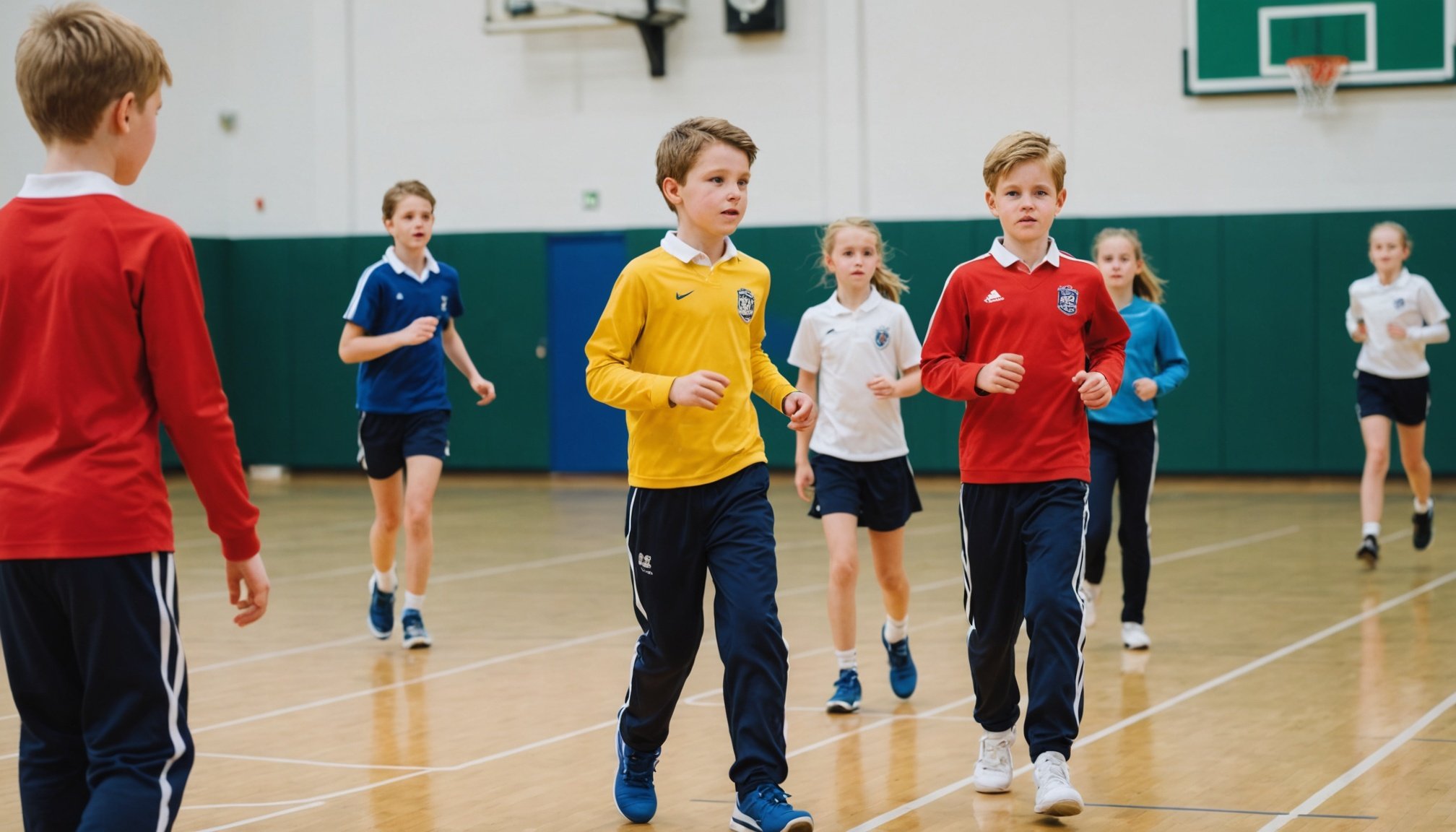In recent years, the importance of physical education in schools has gained significant attention. With rising concerns about the health of pupils and the sedentary lifestyles that many students lead, educators and policymakers are increasingly aware of the need to enhance the integration of physical activity within the school curriculum. This article explores various approaches that schools in the UK can adopt to better integrate physical education into their teaching, thereby promoting health and encouraging a more active lifestyle among students. We will discuss the role of teachers, the impact on student learning, and provide relevant examples of successful integration.
The Role of Teachers in Physical Education
Teachers play a crucial role in delivering effective physical education programs. They are not only responsible for teaching sports and activities but also for instilling a love of movement and physical activity in their students. To better integrate physical education into the curriculum, it’s essential for teachers to have a solid understanding of its benefits and to be passionate about promoting health through active living.
Also to see : How does the community support system impact the success of UK athletes?
First, teachers should engage in continuous professional development. This could involve attending workshops and training sessions focused on the latest methods and trends in physical education. By enhancing their knowledge and skills, teachers can develop innovative lesson plans that are both enjoyable and engaging for students. For instance, introducing modern sports or incorporating technology, such as fitness apps, can create excitement around physical activities.
Furthermore, collaboration among teachers across different subjects can enhance the integration of physical education. For example, a project-based learning approach could link physical education with science, exploring topics like anatomy or the mechanics of movement. This not only enriches the learning experience but also reinforces the knowledge learned in various subjects. When teachers collaborate, they share insights and strategies that can inspire students to appreciate the significance of being active.
This might interest you : What strategies can coaches implement to develop resilience in young athletes?
Moreover, incorporating health education alongside physical education is vital. Teachers can use the curriculum to discuss topics such as nutrition, mental health, and the benefits of an active lifestyle. This holistic approach ensures that students understand the importance of maintaining their health and encourages lifelong habits of physical activity. In conclusion, the proactive involvement of teachers is fundamental in promoting an integrated and effective physical education program.
Creating an Active School Environment
An active school environment is essential for fostering a culture of physical activity and encouraging students to engage in regular exercise. Schools can create such an environment by providing ample opportunities for students to participate in various activities throughout the day. This involves not only structured physical education classes but also unstructured movement opportunities during breaks and lunchtime.
One effective strategy is to implement ‘active breaks’ during lessons. These short intervals of movement can help improve focus and energy levels among students. For example, teachers can encourage simple stretches or quick games that get students moving, which can be especially beneficial before or after intense study periods. Such practices promote health and improve concentration and productivity, demonstrating the interconnectedness of physical activity and learning.
Moreover, schools should consider expanding their curriculum to include a wider variety of physical activities. Traditional sports such as football and basketball are excellent, but integrating alternative activities like dance, yoga, or martial arts can cater to diverse student interests. This approach ensures that all pupils can find an activity they enjoy, which is crucial for sustained participation in physical education.
Furthermore, the installation of facilities and equipment that promote physical activity is vital. Schools should ensure that playgrounds and sports fields are accessible and well-maintained. Investments in outdoor spaces, such as climbing walls or nature trails, can encourage students to be more active during their free time. By making physical activity a readily available option, schools can influence students to develop a positive relationship with movement.
Ultimately, creating an active school environment requires a commitment from the entire school community, including administration, teachers, and students. When everyone works together, schools can significantly enhance the integration of physical education and encourage healthy, active lifestyles among pupils.
Integrating Technology into Physical Education
The integration of technology into physical education presents exciting possibilities for enhancing student engagement and tracking progress. As technology becomes increasingly prevalent in all aspects of education, its application in physical activity offers new ways to motivate students and improve their learning experiences.
One way to leverage technology is through fitness tracking devices and apps. These tools allow students to monitor their activity levels, set goals, and receive feedback on their progress. For example, wearable devices can track steps taken during the day or calories burned during exercise. By gamifying physical education, students can be encouraged to reach challenges and compete with peers, fostering a sense of community and teamwork.
Additionally, technology can facilitate personalized learning within physical education. By using app-based platforms, teachers can design individualized fitness programs that cater to each student’s needs and preferences. This level of customization helps ensure that students are challenged according to their abilities, promoting the development of skills and knowledge in a way that resonates with them personally.
Moreover, incorporating virtual reality (VR) and augmented reality (AR) into physical education can enhance the learning experience. These technologies can transport students to different environments where they can practice sports or explore movements in a safe, controlled manner. For instance, a VR simulation might allow students to play a sport they have never tried in real life, broadening their exposure to various activities.
Ultimately, integrating technology into physical education not only enriches the curriculum but also prepares students for a future where digital skills are essential. Schools that embrace this integration position themselves at the forefront of educational innovation, enhancing the overall learning experience for pupils.
Promoting Inclusivity in Physical Education
Ensuring that physical education is inclusive is essential for fostering a supportive environment where all students feel valued and motivated to participate. Inclusivity in schools means recognizing and accommodating the diverse needs of students, regardless of their abilities or backgrounds.
To promote inclusivity, schools must first assess their curriculum and identify ways to adapt it for students with various needs. This may involve modifying activities to ensure that all students can participate meaningfully. For instance, if a game requires running, adaptations can be made to allow students with mobility challenges to engage at their own pace or using different equipment. Educators should be trained in inclusive teaching strategies that prioritize health and participation for all.
Moreover, fostering an inclusive environment means encouraging teamwork and collaboration among students. Group activities can help students learn from one another and appreciate each other’s strengths. By emphasizing cooperation over competition, teachers can help build a supportive community where every pupil feels valued. This approach not only enhances skills but also promotes confidence and social connections among students.
Schools can also celebrate diversity in physical education by introducing cultural sports and activities. For example, incorporating traditional games from various cultures allows students to appreciate different forms of movement. This not only enriches their knowledge but also cultivates respect and understanding among classmates.
Lastly, parental involvement is crucial for promoting inclusivity. Schools should engage parents in discussions about physical education and seek their input on how to make programs more inclusive. By working together, schools and families can create a supportive network that encourages all students to take part in physical activity.
In summary, promoting inclusivity in physical education ensures that every student has the opportunity to be active, learn, and grow. By adapting the curriculum, fostering teamwork, and encouraging cultural appreciation, schools can create an environment that celebrates diversity and encourages lifelong health.
The integration of physical education into school curricula is vital for the holistic development of students. By focusing on the role of teachers, creating active environments, leveraging technology, and promoting inclusivity, schools in the UK can significantly enhance the health and well-being of their pupils. A well-rounded approach to physical education not only benefits individual students but also contributes to a healthier society overall. As schools continue to evolve, prioritizing physical activity within the curriculum will cultivate a generation of active, knowledgeable, and engaged learners.











